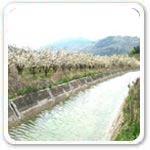Irrigation Problems in Pakistan
 A densely populated agrarian country with one of the best irrigation system but still has backward agricultural milieu, is Pakistan. More than 65% of the population is living on the attachments with agri-based fields or industries. Punjab is the most populated province of Pakistan. Irrigation system of Punjab is not very developed. The present irrigation system is almost hundred year old. The management of current irrigation system is a big challenge with increasing population. Burden on limited irrigation system is also going heavy and situation is becoming more and more serious. The problems with management of Pakistan’ irrigation system includes social as well as technical ones. A loss in agriculture production is enormous due to mismanagement of irrigation system.
A densely populated agrarian country with one of the best irrigation system but still has backward agricultural milieu, is Pakistan. More than 65% of the population is living on the attachments with agri-based fields or industries. Punjab is the most populated province of Pakistan. Irrigation system of Punjab is not very developed. The present irrigation system is almost hundred year old. The management of current irrigation system is a big challenge with increasing population. Burden on limited irrigation system is also going heavy and situation is becoming more and more serious. The problems with management of Pakistan’ irrigation system includes social as well as technical ones. A loss in agriculture production is enormous due to mismanagement of irrigation system.
The second best irrigation system after Egypt is not free of weaklings. Following are some major curtailing of Pak irrigation system.
Water Wastage
Pakistan is experiencing large water wastage. The old methods of irrigation with flood water are still being used by the farmer who wastes about 50 to 60 percent of water. The recent flood which is biggest of this century bestowed Pakistan a gig resource of water, but the lack of water reservoirs have wasted it carelessly. A new irrigation system called drip irrigation system has been introduced in many parts of the world. This not only saves water but also gives proper quantity of water according to the needs of plants. But Pakistan is not familiar with it yet.
Water logging and salinity
Water logging and salinity is expanding with every passing day. Government of Pakistan has not taken any step to resolve this issue. With the decreasing storage capacity of dams due to silt accumulation the farmers, therefore, are installing more and more tube wells to irrigate their crops. This is another reason behind salinity is spreading in the major areas of Punjab and Sindh.
Water Scarcity due to India’ Expedition
The Pakistan’s enemy since ever, India has made a number of dams violating the Indus Water Treaty of 1960. This act of India has dried the rivers of Pakistan. The average annual flow has been decreased to an alarming level. While the designed cropping intensity of Pakistan’s irrigation system was low in from 60 to 70%, but today cropping intensity has crossed the level of 120% indicating increased water demand. On the other hand
Conflicts among provinces over Kalabagh Dam (KBD).
The delay in building new water reservoirs in Pakistan has played vicious role in complicating the irrigation problems Had Pakistan built Kalabagh dam, all the irrigation issues would have been resolved. No province except Punjab, ready to go forward with KBD project.
Lack of Funds
In Pakistan, the water management is handled by the provincial governments. Although a reasonable slice of the total budget is cut away for irrigation and canal system but this allocation of funds is not sufficient to address all the problems regarding irrigation. The difference between the required and the allocated amount is estimated to be more than 24%. This situation has resulted in the deterioration of the canal system.
Lack of dams
Pakistan needs more dams Indus, Jehlum and Chenab rivers. This will enhance not only the storage capacity of water but also will minimize the per acre cost of all the crops. This act will also lessen the salinity chances of the lands as less number of tube well water would be used to irrigate the lands which are expected to be saline.
A paradigm shifts are needed in government policies and the legal and institutional framework of water management if water use is to improve and those effective changes can fruit very big gains in agriculture output.
Because of serious threats to irrigation system, the wise use of available water resources has become essential. Planning, design, and operation of land reclamation projects and irrigation system, therefore, have to take into account the new issues. At a time efficient organization and planning of irrigation and drainage system, is one of the most critical goals to achieve the widely accepted approach of integrated water Resources Management.
Speak Your Mind
and oh, if you want a pic to show with your comment, go get a gravatar!



Helped me in my project
helped me in my entry test
I need the references of this topic i have to put in my report so i need your help thanks
I need the references of this topic i have to put in my report so i need your help thanks try to reply soon
hi sir i need help in my agriculture land intiqal 1934 i need compete urdu book of agriculture land in pakistan